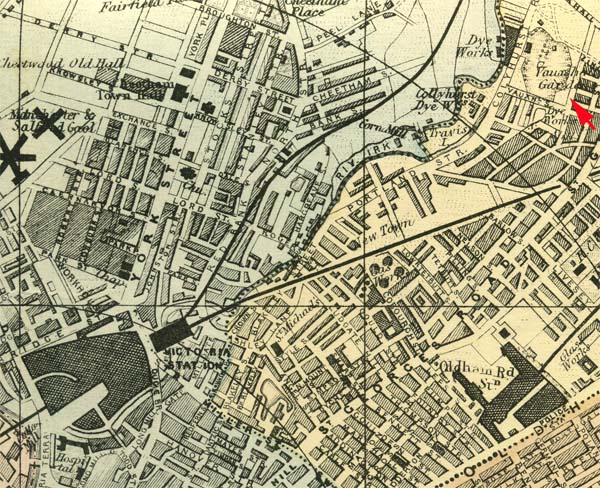
If you drive out of the
city centre along the A664, Rochdale Road, you will see
off to your left, in Collyhurst, three refurbished /
reclad tower blocks. These towers have been named
after the famous Manchester suffragettes Sylvia,
Christabel and Emmeline Pankhurst and their christian
names are emblazoned on the roofs.
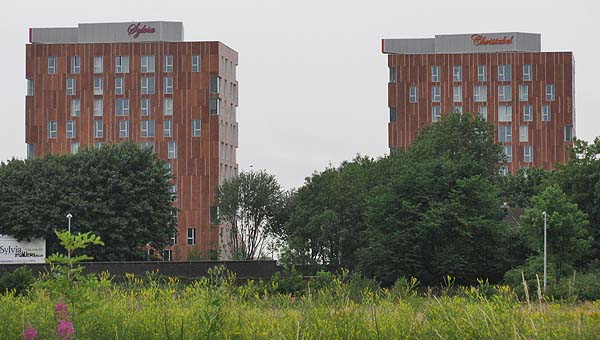

Just beyond the last
of the towers, Dalton Street leads off to your left
and at the end of the road is an area of open,
landscaped ground bound on the northwest side by
Collyhurst Road and the River Irk. This is part
of the Irk Valley that is the focus of
redevelopment. It is hoped that it will one day
provide a green corridor into the city centre with the
river as a focus. However, the area has a
chequered history and at one time the river was lined
with dye works and other chemical factories and a
colliery was located nearby. As the Irk Valley
Action Plan makes clear, this land next to Sand
Street, "remains heavily contaminated below the
surface-level landscaping."
Ironically, in the 1700s this land was regarded as, "a wild, uncared-for dell" until a local man, called Robert Tinker, decided to clear and convert it into what became known locally as, "Tinker's Gardens". Tinker was the owner of the Grape & Compass Coffee House and Tea Garden and he cleared the ground to create the kind of "Pleasure Garden" that was very popular around the country at this time. Sarah Jane Downing in her book, The English Pleasure Garden 1660 - 1860, says of it, "Mr Tinker named his idyll Elysian Gardens, after the place in Greek mythology where the souls of the heroic and the virtuous were laid to rest, and later Vauxhall Gardens, as in London's renowned place of recreation. His gardens were adorned by 3,000 coloured lights and those who paid 1s 6d (7.5p) to enter in the early 1800s were treated to a night which was 'at once intelligent, rural and delightful'".
Apparently there was dancing on the lawns and refreshments were served at tables set among the trees and shrubbery. Downing says that, "On Sundays and holidays people would come on horseback from Moston and Ancoats and one advertisement states that `excellent grass for horses is available at moderate terms' "- - "It is claimed that there were 50,000 people at the gardens to see the Royal Coronation Balloon ascent in August 1827."
Ironically, in the 1700s this land was regarded as, "a wild, uncared-for dell" until a local man, called Robert Tinker, decided to clear and convert it into what became known locally as, "Tinker's Gardens". Tinker was the owner of the Grape & Compass Coffee House and Tea Garden and he cleared the ground to create the kind of "Pleasure Garden" that was very popular around the country at this time. Sarah Jane Downing in her book, The English Pleasure Garden 1660 - 1860, says of it, "Mr Tinker named his idyll Elysian Gardens, after the place in Greek mythology where the souls of the heroic and the virtuous were laid to rest, and later Vauxhall Gardens, as in London's renowned place of recreation. His gardens were adorned by 3,000 coloured lights and those who paid 1s 6d (7.5p) to enter in the early 1800s were treated to a night which was 'at once intelligent, rural and delightful'".
Apparently there was dancing on the lawns and refreshments were served at tables set among the trees and shrubbery. Downing says that, "On Sundays and holidays people would come on horseback from Moston and Ancoats and one advertisement states that `excellent grass for horses is available at moderate terms' "- - "It is claimed that there were 50,000 people at the gardens to see the Royal Coronation Balloon ascent in August 1827."
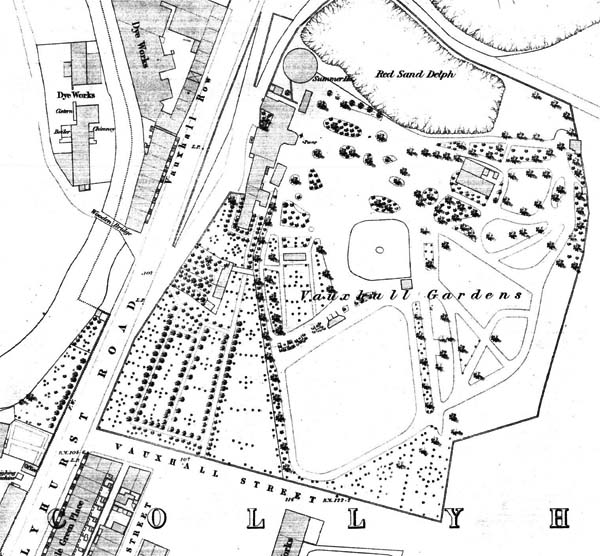
Tinker died in 1836 but
the gardens continued to operate for another 16
years. The map above, dated 1849, shows the gardens
but also helps us to understand why they eventually
closed. Beside the Irk we see the Dye Works, just
one of the factories pouring effluence into the
river. The Irk became a heavily polluted neighbour
of the gardens and the area was becoming far from
Elysian. At the end of the park you can see a sand
quarry and according to Downing, "The
final demise came because the sandy soil known as
Vauxhall Sand - so good for growing cucumbers - was
prized by `iron moulders' and sold off by the
barrow-load." Below you can see the setting
in 1857.
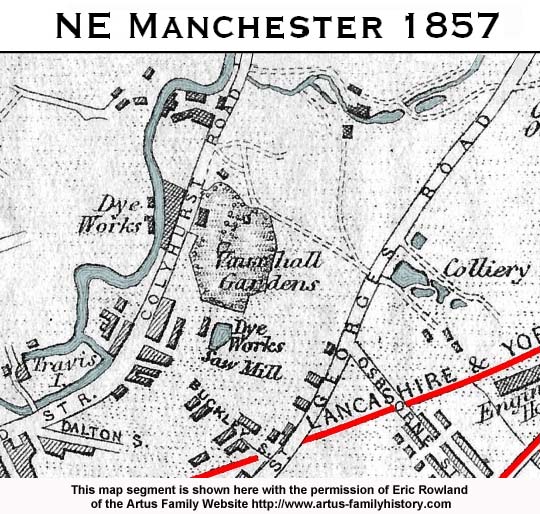

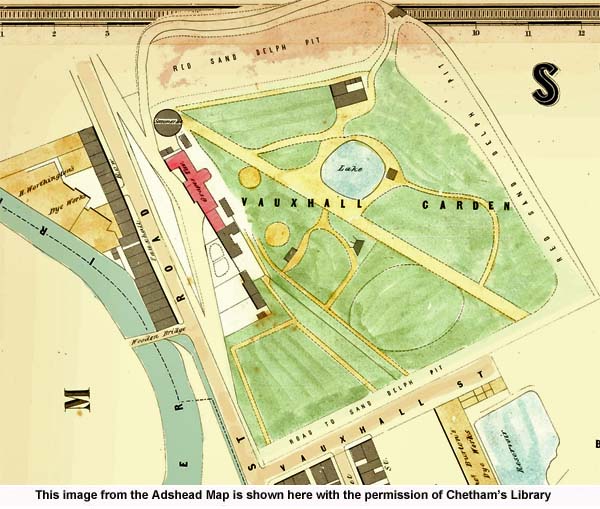
Today, the only thing that
provides a clue to the fact that this piece of open ground
was once home to this important tourist attraction
is the street which forms its southern boundary, Vauxhall
Street. And Sand Street, which marks its eastern
boundary, commemorates its demise.